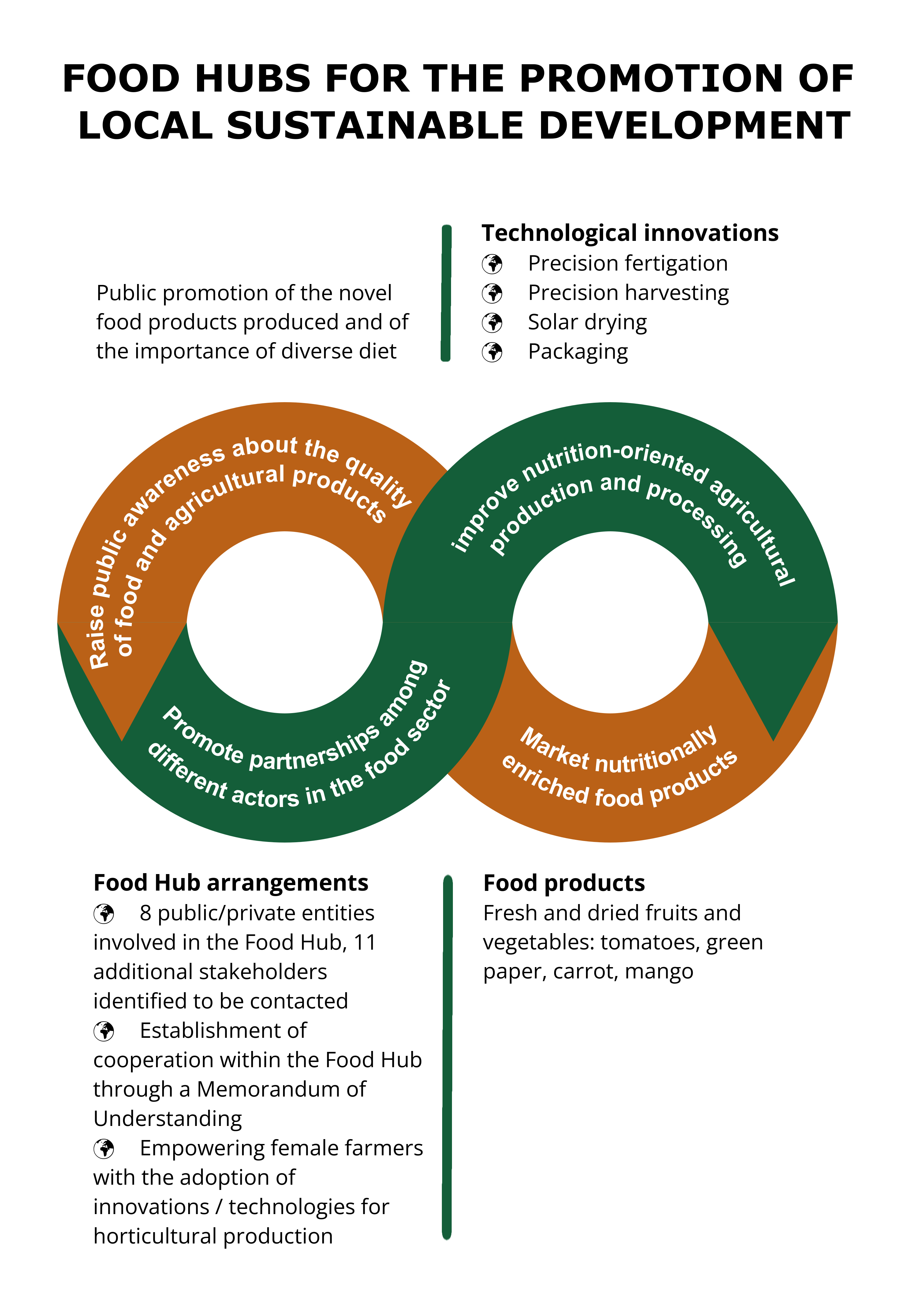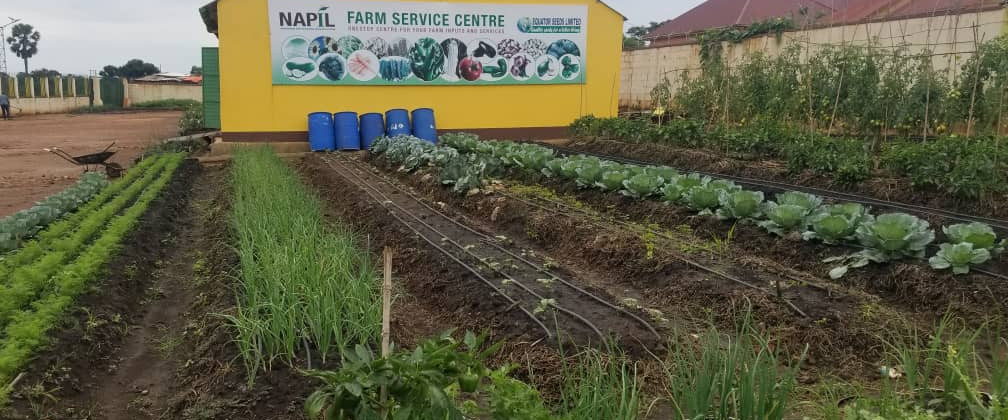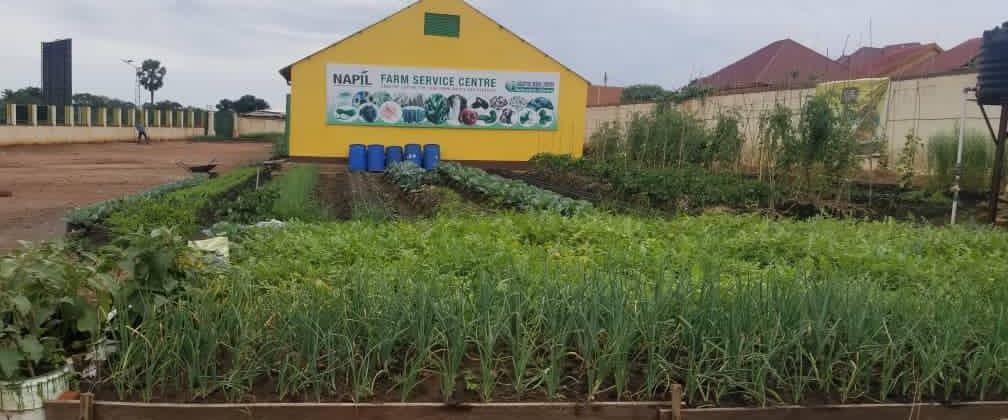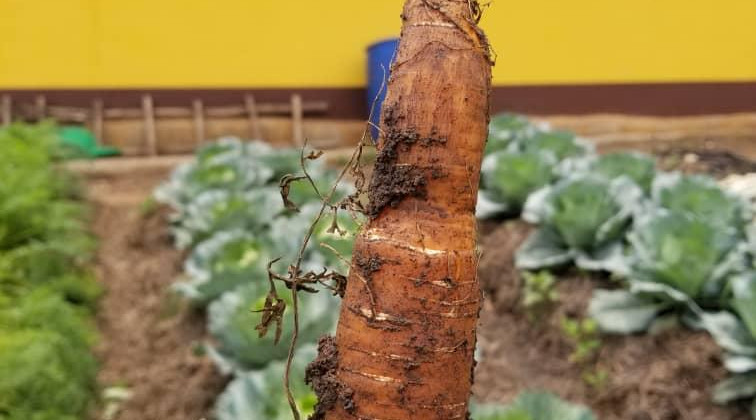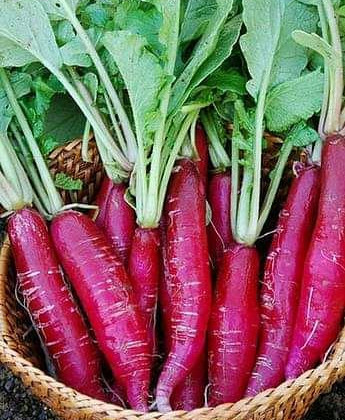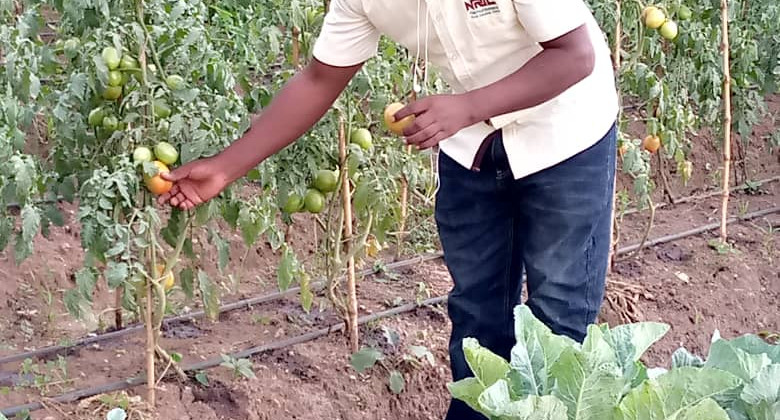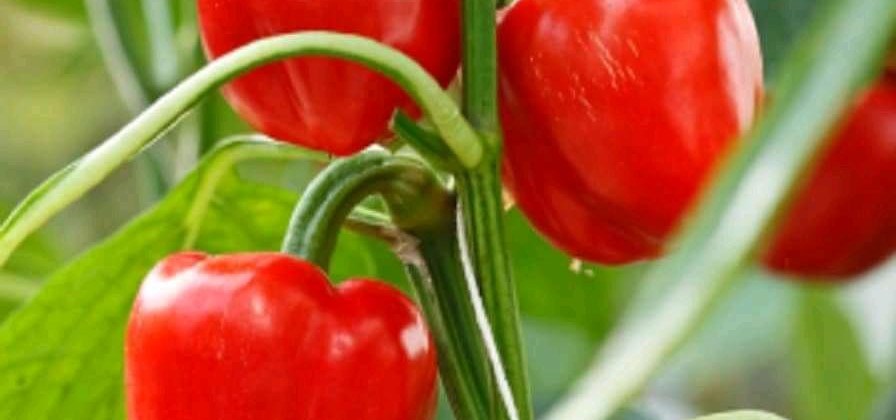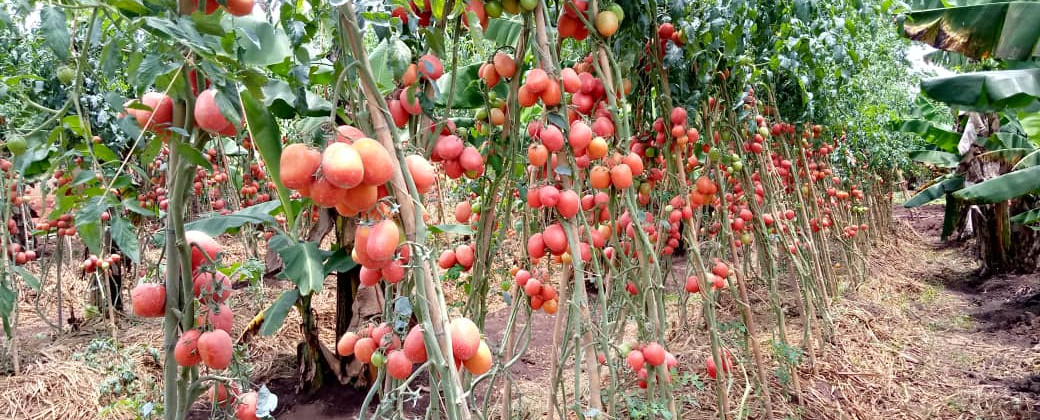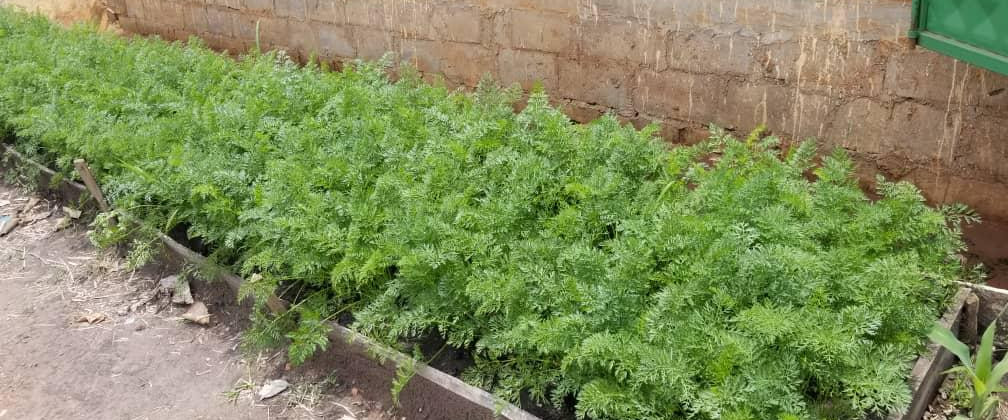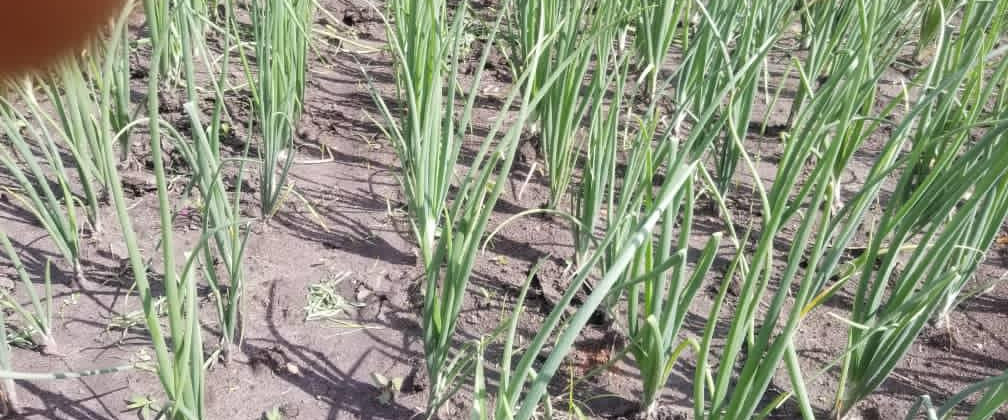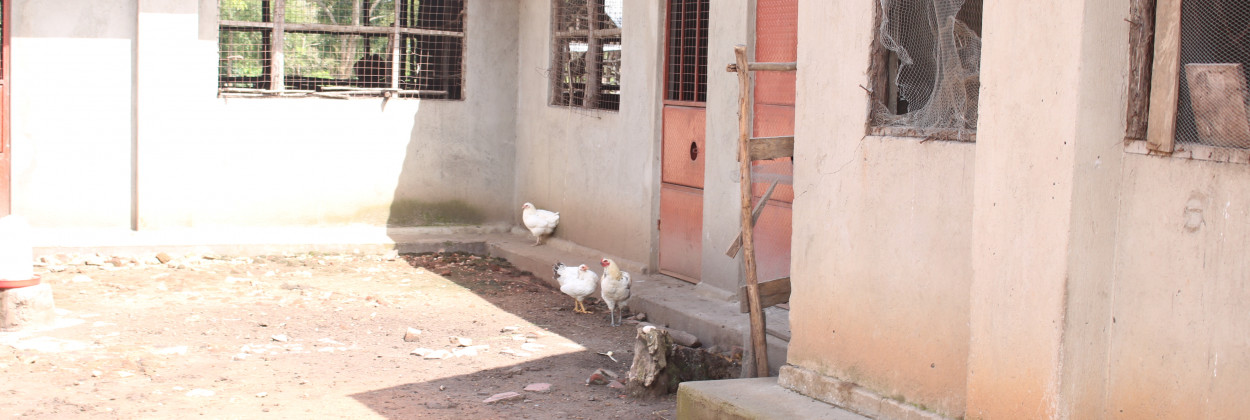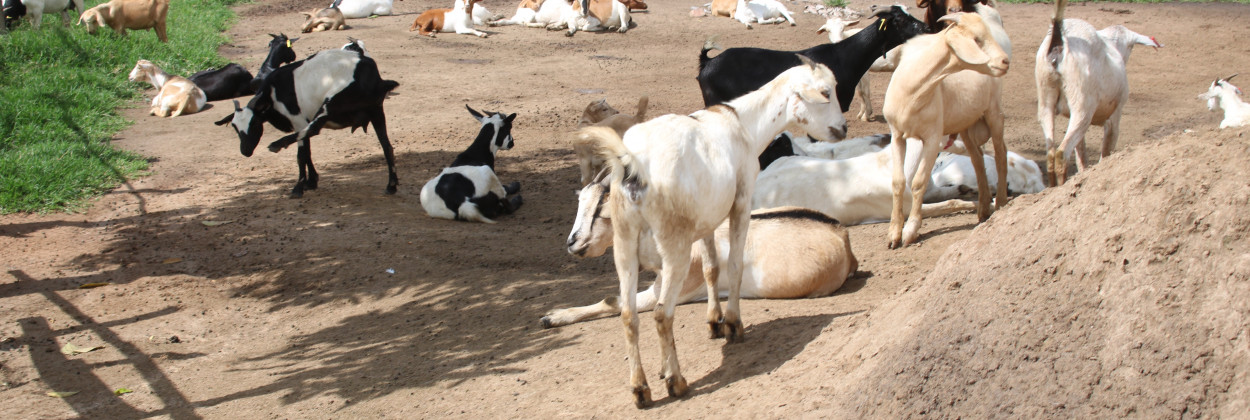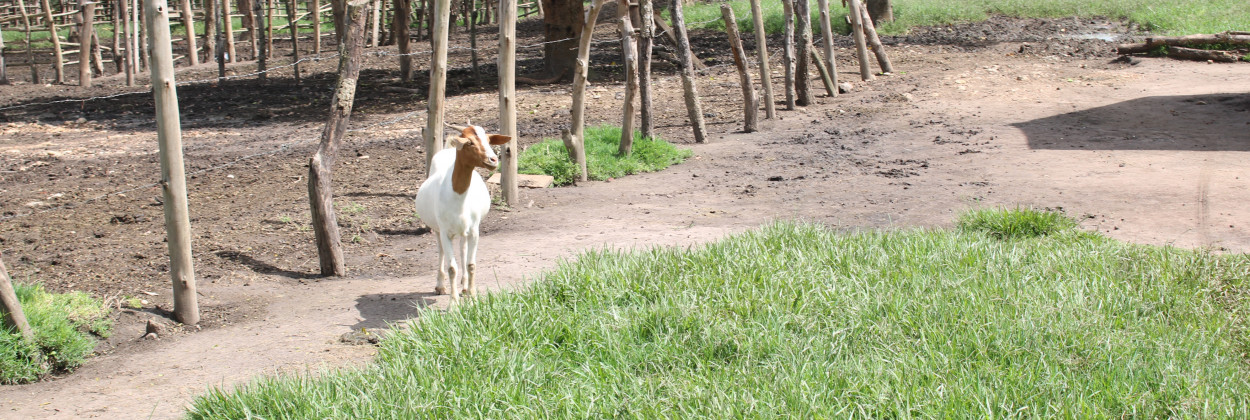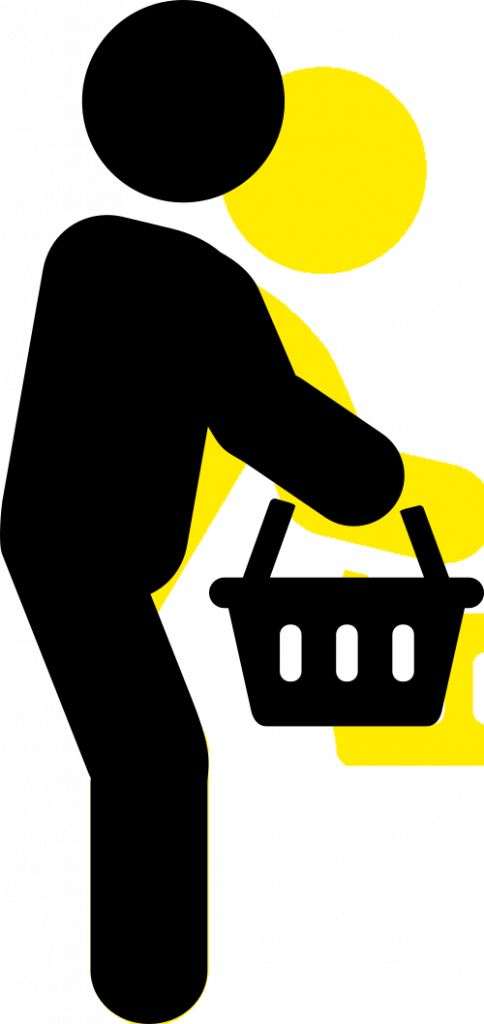This Food Hub is located in the Nakaseke district, in the central part of Uganda. In 2020, it registered a population of 234,600 people.
Generally, Ugandan diets are mainly composed of starch staples especially cereals and roots, tubers and bananas, with legumes being the main protein source. Currently, the food environment is characterized by a transitioning diet manifesting elements of both Westernized and traditional diets, even though the diet remains predominantly plant-based.
The prevalence of stunting, wasting and being underweight among children under the age of five years (under-fives) stands at 29%, 4% and 11% respectively. At the national level (entire population), the prevalence of underweight, stunting and wasting stands at 41%, 27% and 4% respectively.
Approximately 24% of females of reproductive age and 9% of males aged 15-54 years are either overweight or obese.
Vitamin A and iron deficiency are the most common micronutrient deficiencies.
The crops with the most important agricultural production in Uganda are maize (76.2% of farmers produce it), bean (65% of farmers) and coffee (23%).
Highlights about the work carried out in this Food Hub
Technological innovations in this Food Hub
Precision irrigation / fertigation systems. The installation of irrigation/ fertigation systems with smart sensors can efficiently prevent such a waste of water. The objective is to set up a digital solution allowing small farmers to schedule irrigation / Fertigation based on the monitoring of the continuous Soil, Plant climate using sensors and a smartphone app. All the information will be gathered through data collected by sensors installed in the field, processed, and distributed by a Big Data service. The effect of different fertigation strategies will be tested in four crops (Green Pepper, Cabbage, Tomato and Pumpkin), by applying a randomized block design with three repetitions per treatment. Yields and quality parameters of the crops will be measured and compared.
Precision harvesting systems. The information on the ideal harvesting time is essential because the farmer needs to make informed decisions to ensure ideal product quality, and storage conditions and to prevent harvest losses. Additionally, being able to calculate the ideal harvesting time would allow us to better organise supply chains and reduce losses through improved logistics. Precision harvesting systems can be implemented through sensors on the ground or sensors in the air. The study aims at developing smart monitoring and control systems aimed at optimizing and standardizing the timing and procedure of harvesting crops and fruits.
The fertigation trials that also will be developed in this Food Hub will serve as a test case for informing precision harvest. Yield and quality of crops from the fertigation trials harvested according to local habits and according to optimal windows of irradiation and temperature sums informed by the local weather station and satellite data will be compared and harvest models will be developed. These harvest models can then be scaled to any other interested Food Hub within the FoodLAND consortium.
Solar drying. The study aims at assessing the potential of solar drying of leafy vegetables to prolong shelf life and ensure continuous supply during the dry spell. Solar drying technologies best suited for green leafy vegetables (Amaranths) will be identified and profiled through a survey, and then the suitable solar drying technologies tested in a participatory manner for their capacity to dry Amaranths.
Bio-based packaging. This action is aimed at developing and testing bio-based packages able to preserve the overall quality of food products from different Food Hubs, during storage and transportation. The activities to be done are the following: identification of different raw materials among several agricultural by-products from local regions to be used as material, optimisation of the coating formulation, assessment, characterization of preliminary obtained materials, pre-selection, testing at lab/small scale level of environmentally friendly, affordable, and suitable pack materials. This Food Hub is focused on bio-based packaging for fruit and vegetable products.
Highlights about the research with farmers
FoodLAND surveyed a total amount of 400 farmers in this region with the aim of improving the background knowledge of African smallholder farmers’ decision-making and of individual and contextual conditions. 123 out of these 400 farmers surveyed were women, and the other 277 were men. 62.5% of farmers are members of any local farmers’ associations.
According to the information gathered from the surveys, 89.2% of farmers’ income is lower than the average income in the region, the income of 8.5% of farmers is about the average or somewhat higher, and only 2.2% of farmers stated an income higher than average. Nevertheless, 88% of them are able to meet their household’s food needs, 10% experience some difficulties, and 2% face serious food shortages.
Besides, they have reported major worries regarding the near future about infestation pests (4.24 on a scale from 1 to 5), the cost price increase of fertilizer or seed (4.22), health diseases (4.07), social problems (violence or crime) (3.88), drought (3.88), income reduction (3.75), and dispossession of land (3.65).
With regard to their interest and propensity to introduce new technologies and/or productions, 90.3% of farmers are extremely or moderately interested in adopting a technological innovation (4.76 on a scale from 1 to 5).
Highlights about the research with consumers
With the aim of enlarging background knowledge of African consumers’ food preferences and behaviours and of their socioeconomic drivers and measuring the current level of dietary diversity, FoodLAND has assessed food consumption at both individual and household levels that provide a good measure of diet quality and diversity. FoodLAND has conducted surveys both in households and out of stores in Kapeeka, which is paired with this Food Hub. 511 people participated in the survey. Below you can find some highlights extracted from these surveys, regarding consumers’ preferences, habits, incentives, and barriers when it comes to choosing food products for their households.
Urban consumers consider on average their household diet as moderately healthy (around 3.6 on a scale of 5). When asked about their propensity to include in their diets a new food product with augmented nutrient content (e.g., naturally improved bean with high levels of proteins and minerals) that could complement their current household diet, consumers report a high level of interest (4.2 on a scale to 5). When looking at the reasons behind the inclusion of new nutrient-dense food, Ugandan consumers rate the highest possibility of enhancing the healthiness of their household diet, and their trust in doctor’s recommendations. The most rated obstacles are price, the feeling of lower food safety, and potentially unfamiliar taste.
As for the reasons behind usual food purchasing behaviours, respondents in Uganda rate the most on average product characteristics (taste, aroma, colour, shape), food affordability (price) and their willingness to diversify or balance their diet. The food categories mostly lacking in the consumer’s household diet are on average legumes, oils and cereal products.
Consumers were also asked about their interest in buying new local food products. They showed a high disposition to buy these local products (around 4.1 on a scale of 5). Among the reasons that make them choose the new local products, the three consumers rated the most were that it could help local farmers, they could afford it and it could be easily found where they usually buy food.
